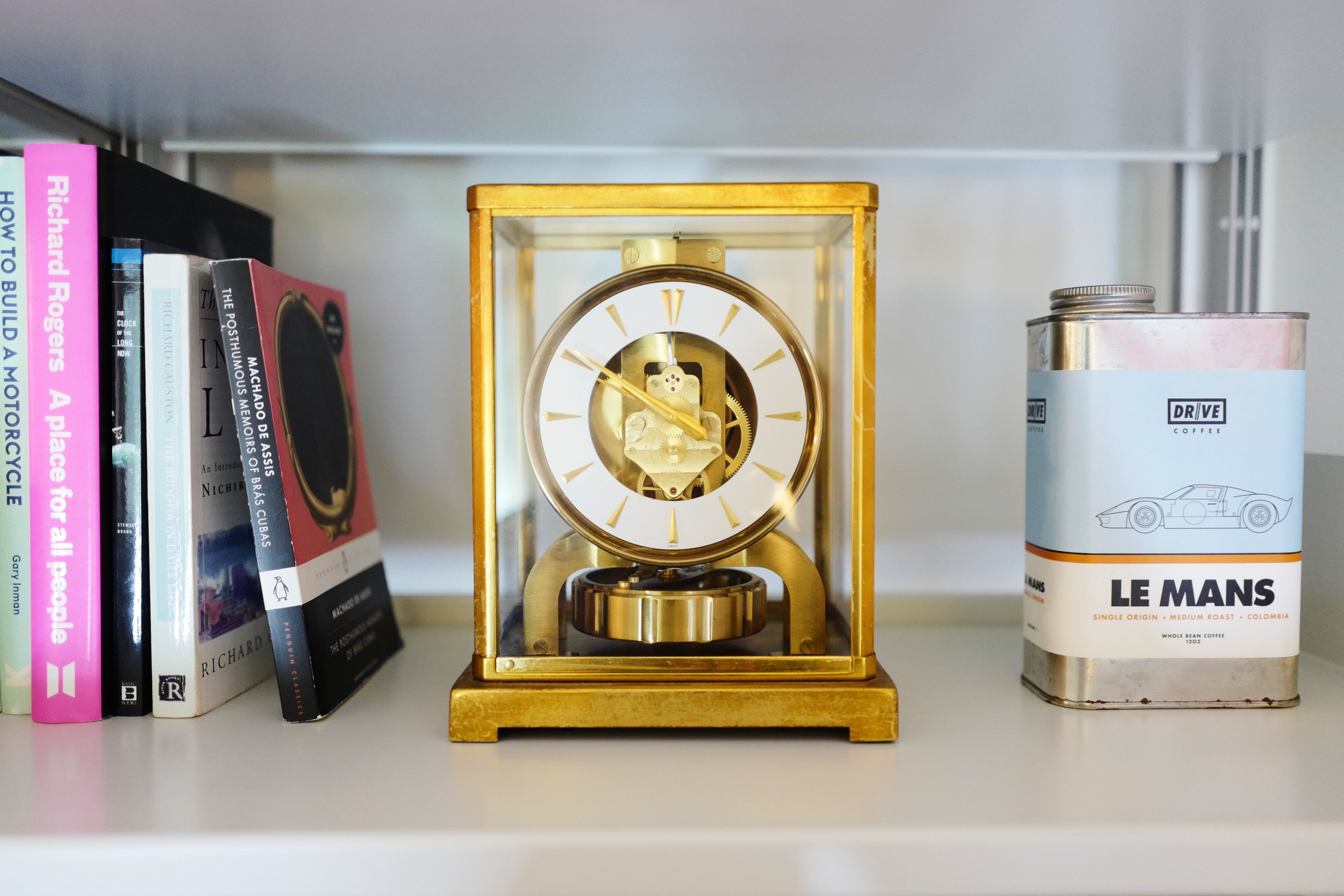Jaeger-LeCoultre Atmos Clock restoration
The Atmos clock, manufactured by Swiss firm Jaeger-LeCoultre, deserves to be recognized as one of the great masterpieces of design and engineering of the 20th century. The clock is powered by minute changes in temperature and atmospheric pressure, which allow it to run perpetually in an ordinary domestic environment. A temperature change of one degree is enough to power the clock for two days, and such is the precision and efficiency of the mechanism that the power consumed by a single 15-watt light bulb could run 60 million Atmos clocks simultaneously. The clocks were originally claimed to have a 600-year service life, however increased pollutants in the atmosphere mean routine maintenance is required every twenty years.
That these clocks first went on sale in 1936 is surprising to many, and the design and engineering evokes a time when things were built to last. Every Atmos takes a month to build by hand, followed by five weeks of adjustment before they can be shipped. They have graced the homes of John F. Kennedy, Winston Churchill and Charlie Chaplin among others, and were often given as retirement presents to executives.
The Atmos clock embodies everything that I consider to be hallmarks of excellent design: innovation, precision, thoughtfulness down to the finest details, longevity, environmental sensitivity, and beautiful form wedded to useful function. The Atmos clock represents the antithesis of the planned obsolescence that characterizes modern consumer goods and is all the more appealing because of it. I hope my Atmos is still running happily in 600 years.
An Atmos clock is expensive to buy new. Prices start from $2,600 and rise into the tens of thousands. However, because little is known about them and they are tricky to work on, you can pick up an unhappy one on eBay for relatively little. I got this non-runner from Ohio for $420, which is a paltry sum for a masterpiece that when properly maintained will easily outlive its owner.
When the clock arrived we took it apart piece by piece, gave it a clean and a wee bit of oil and it has kept time perfectly since. It truly is a thing of beauty, and quite mesmerizing to watch the mechanism working away through the glass, powered on nothing but air. Whilst not to everyone's taste, I love the patina on the outside so have not restored the gold case.
Looking down through the case after its arrival from Ohio. It’s filthy and not keeping time for more than an hour or two.
You can see here that the lubrication from the clock has evaporated in the heat and condensed again on the inside of the glass case. It's unlikely that the clock had been serviced since it was made in 1957. That it was running at all is testament to the feat of design and engineering that is the Atmos clock.
The clock came from somewhere hot in the US. This photo shows the effect the sun has had on the lacquer on the outside of the clock vs. its protected insides. These are the pillars of the glass case.
Here is the date of manufacture etched into the drum: 1957.
Here's the inside of the big drum on the back that contains the bellows. In here is basically a sack full of ethyl chloride which expands as the temperature changes in the room. This bellow then pushes the spring in the photo below.
This photo shows in more detail how the clock works. After being compressed by the bellows on the back, the spring on the left pushes back as the temperature drops and the bellows contract again. This pulls the chain which in turn pulls a ratchet which winds up the mainspring in the drum on the right of the picture. This means all the clock needs to run is a slight change in temperature or pressure. A change of one degree in temperature can power the clock for two days. Amazing.
Here I'm taking off the mech without first removing the dial. My mistake.
The face is off. The metal surround is gorgeous.
Carefully letting the power down from the springs before the mainspring that powers the clock can be removed and checked.
The attention to detail on every single component of an Atmos is stunning.
The whole clock needed a clean. Muck on the components increases friction and stops the mechanism working.
The mainspring that powers the mechanism is bone dry and dirty. Atmos clocks require the minimum amount of friction to work properly so this needed cleaning and re-lubricating. When fully wound the mainspring can power the clock for an incredible 14–16 months.
The components of the mechanism after being cleaned up.
Re-assembling the mechanism.
Taking pride of place at home. Now keeping perfect time :)

















